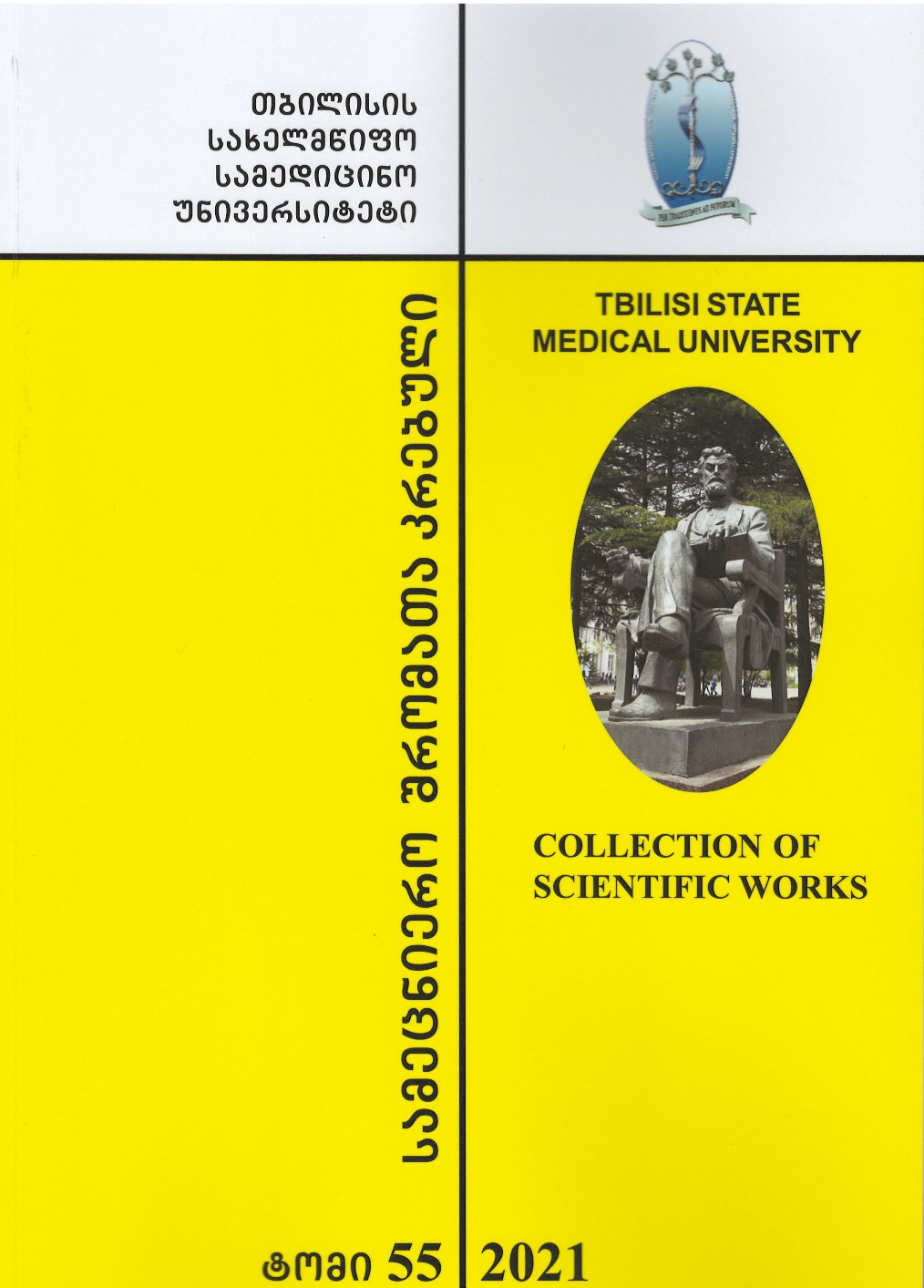Abstract
During the last decades, sublingual allergen immunother-apy (SLIT) has been developed as an alternative to subcuta-neous allergen immunotherapy (SCIT). According to severaloriginal Cochrane Review, questions remained about thesafety and efficacy of sublingual immunotherapy for peoplewith asthma [1].Despite that, many guidelines for asthma treatment rec-ommend that SLIT be used for people with asthma that isdifficult to control with standard therapies [2, 3, 4, 5].Since polysensitization to various allergens is quite com-mon in bronchial asthma, choosing vaccines for specific im-munotherapy is usually challenging [6]. It is also interestingto see how effective immunotherapy with dominant aller-gens can be in patients of different demographic groups andthe cost-effectiveness of this approach [7].The study aimed to evaluate the efficacy, effectivenessand safety of sublingual immunotherapy with dominant al-lergens in poly sensitized patients. The research was con-ducted in several stages. In the first stage, a prospectivecohort study was performed. Patients of both sexes aged 6-60 years with asthma who were sensitized to dominant respi-ratory allergens were selected. They were placed in twogroups. The active group (SLIT) and the control (standardcare) group included patients (129) who were sensitized tomite, molds and mixed-grass types of allergens to only onetype of allergen.References
Fortescue_R, Kew_KM, Leung_MShiu Tsun. Sublingual immunotherapy for asthma. Cochrane Database of Systematic Reviews 2020, Issue 9.
Rebecca Fortescue, Kayleigh M Kew, Marco Shiu Tsun Leung, Sublingual immunotherapy for asthma Cochrane Database of Systematic Reviews. 2020.
Wilson DR, Lima MT, Durham SR. Sublingual immunotherapy for allergic rhinitis: systematic review and metaanalysis. Allergy 2005; 60:4–12.
Wilson DR, Torres Lima M, Durham SR. Sublingual immunotherapy for allergic rhinitis (Cochrane review). In: Ear, Nose and Throat Disorders Group, eds. The Cochrane Library, Issue 1. 2005:1–19. Oxford, UK: Update software.
Olaguibel JM, A ´ lvarez Puebla MJ. Efficacy of sublingual allergen vaccination for respiratory allergy in children: conclusions from one meta-analysis. J Investig Allergol Clin Immunol. 2005; 15:9–16.
Calderon MA, Demoly P, Gerth van Wijk R, Bousquet J, Sheikh A, Frew A et al. EAACI: A European Declaration on Immunotherapy. Designing the future of allergen specific immunotherapy. Clin Transl Allergy 2012; 2:20.
2021 GINA Report, Global Strategy for Asthma Management and Prevention.
G. W. Canonica, at all, Recommendations for standardization of clinical trials with Allergen Specific Immunotherapy for respiratory allergy. A statement of a World Allergy Organization (WAO) taskforce. Allergy 2007: 62: 317–324.
O. Pfaar, P. Demoly at all, Recommendations for the standardization of clinical outcomes used in allergen immunotherapy trials for allergic rhinoconjunctivitis: an EAACI Position Paper. Allergy 2014; 69: 854–867.
Stephen V. Faraone, Interpreting Estimates of Treatment Effects P&T® December 2008 Vol. 33 No. 12.
McGraw KO, Wong SP. A common language effect size statistic. Psychol Bull 1992; 111:361–365.
Cohen, J. (1977). Statistical power analysis for the behavioral sciences. Routledge.
Furukawa, T. A., & Leucht, S. How to obtain NNT from Cohen’s d: comparison of two methods. PloS one, 6(4). 2011. April 2011. Vol 6. Issue 4. Article e19070.
Panzner P, Malkusova I, Vachova M, Liska M, Brodska P, Ruzickova O, et al. Bronchial inflammation in seasonal allergic rhinitis with or without asthma in relation to natural exposure to pollen allergens. Allergol Immunopathol (Madr) 2013.
Guerra S, Sherrill DL, Martinez FD, Barbee RA. Rhinitis as an independent risk factor for adult-onset asthma. J Allergy Clin Immunol 2002; 109(3):419-25.
Wenming Z, Chunrong L, Vanitha S, Kari N. Impact of Allergen Immunotherapy in Allergic Asthma. Immunotherapy (2018) 10:579–93.
Burks AW, Calderon MA, Casale T, Linda C, Demoly P, Jutel M, et al. Update on Allergy Immunotherapy: American Academy of Allergy, Asthma & Immunology/European Academy of Allergy and Clinical Immunology/PRACTALL Consensus Report. J Allergy Clin Immunol (2013) 131:1288e1283–96e1283.
Bufe A, Eberle P, Franke-Beckmann E, Funck J, Kimmig M, Klimek L, et al. Safety and efficacy in children of an SQ-standardized grass allergen tablet for sublingual immunotherapy. The Journal of allergy and clinical immunology. 2009; 123(1):167-73.e7.
Ayfer Y, Seval GK, Mustafa Y, Derya UA, Gulbin BK. Effect of One-Year Subcutaneous and Sublingual Immunotherapy on Clinical and Laboratory Parameters in Children With Rhinitis and Asthma: A Randomized, Placebo-Controlled, Double-Blind, Double-Dummy Study. Int Arch Allergy Immunol (2012) 157:288–98.
Karakoc-Aydiner E, Eifan AO, Baris S, Gunay E, Arturk E, Akkoc T, et al. Long-Term Effect of Sublingual and Subcutaneous Immunotherapy in Dust Mite–Allergic Children With Asthma/ Rhinitis: A 3-Year Prospective Randomized Controlled Trial. J Investig Allergol Clin Immunol (2015) 25:334–42.
Ozdemir C, Yazi D, Gocmen I, Yesil O, Aydogan M, Semic-Jusufagic A, et al. Efficacy of Long-Term Sublingual Immuno- Therapy as an Adjunct to Pharmacotherapy in House Dust Mite-llergic Children With Asthma. Pediatr Allergy mmunol (2007) 18:508–15.
Efficacy of sublingual immunotherapy with high-dose mite extracts in asthma: a multi-center, double-blind, randomized, and placebo-controlled study in Taiwan. Respiratory medicine. 2006; 100(8):1374-83.
Bousquet J, Scheinmann P, Guinnepain MT, PerrinFayolle M, Sauvaget J, Tonnel AB, et al. Sublingualswallow immunotherapy (SLIT) in patients with asthma due to housedust mites: a double-blind, placebo-controlled study. Allergy. 1999;54(3):249-60.
Niu CK, Chen WY, Huang JL, Lue KH, Wang JY. Efficacy of sublingual immunotherapy with high-dose mite extracts in asthma: a multi-center, double-blind, randomized, and placebo-controlled study in Taiwan. Respiratory medicine. 2006; 100(8):1374-83.
Bousquet J, Scheinmann P, Guinnepain MT, PerrinFayolle M, Sauvaget J, Tonnel AB, et al. Sublingual-swallow immunotherapy (SLIT) in patients with asthma due to housedust mites: a double-blind, placebo-controlled study. Allergy. 1999; 54(3):249-60].
